Re-Editions: Between Zeitgeist and Timelessness
...Take Jil Sander, for example, who teamed up with Thonet to give Marcel Breuer's famous cantilever chair an elegant new look – celebrated above all in Milan...

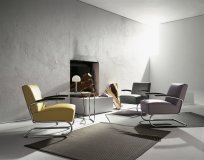
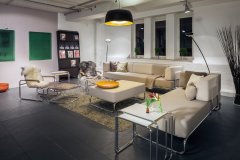
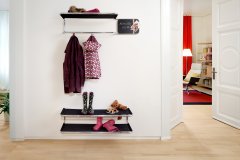


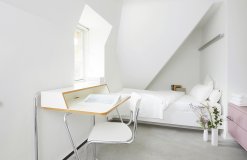
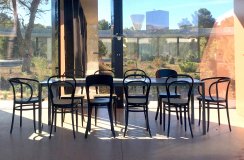
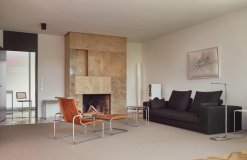

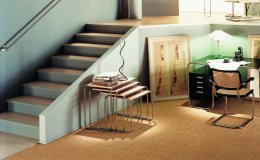

...Take Jil Sander, for example, who teamed up with Thonet to give Marcel Breuer's famous cantilever chair an elegant new look – celebrated above all in Milan...
...The result is a collection of some 80 chairs at various locations throughout the Dessau Bauhaus building and in the foyer of the Bauhaus Museum Dessau; some 80 chairs composing a juxtaposition of licenced works through Knoll, Thonet and Tecta, including the B3 'Wassily' club chair by Marcel Breuer, the S533 R by Ludwig Mies van der Rohe or the D4 by Marcel Breuer, of plagiarisms of those licensed works, and also of alternative interpretations of those licensed works by furniture retail chains such as Ikea or XXXLutz and designers such as Jasper Morrison... The latter a question also posed by the inclusion in Mehr als echt (More than real) of the S 43 cantilever chair by Mart Stam through Thonet, a work without question of importance in context of the (hi)story of furniture and of Functionalist Modernism, but a work, as with all works of Stam, that has as much to do with Bauhaus as this blog...
...opens at architekturgalerie am weißenhof, Am Weißenhof 30, 70191 Stuttgart on Thursday April 26th and runs until Sunday July 1st "Image Spaces: Biology and Building", at Museum für Fotografie, Berlin That nature always has the best construction solutions is well understood... Aiming to achieve not only such but also help biologists fundamentally understand natural structures the engineer Frei Otto and biologist Gerhard Helmcke established in 1961 the interdisciplinary research team Biologie und Bauen - Biology and Building - at the Technische Universität Berlin...
...In addition Ferdinand Kramer realised numerous furniture projects in cooperation with Thonet, most famously arguably being his B403 bentwood chair, while in context of his tenure at Frankfurt University Ferdinand Kramer designed, pretty much, all the furniture and furnishings... This process, which today is particularly important, is not only historically interesting: it alone explains the immense sales of the Thonet industry, and provides a very interesting reference for the further development of rationalisation in the furniture industry...
...knowledge & gestaltung" at Martin-Gropius-Bau, Berlin, Germany The development of architecture and design is in many respects as much one of developments in science and technology as it is one reflective of changing social conditions, economic realities or aesthetic discourse... Curated by the Humboldt University Berlin's improbably named “Image Knowledge Gestaltung...
...With their WerkBundStadt project the Werkbund Berlin aim to redevelop an industrial site in northern Berlin into a future orientated inner-city quarter... "1 With the WerkBundStadt Berlin the Werkbund Berlin aim to continue that tradition...
...the Museum for Communication Berlin aim to explore the question, and answer, in more detail... For the Museum for Communication Berlin it was therefore important that in order to produce an authentic and authoritative exhibition they present only objects where a direct connection to the Golden Ratio exists, something which wasn't always so simple, for as exhibition curator Katharina Schillinger explains, "objects aren't necessarily stamped with the fact that they have been created according to the principles of the Golden Ratio, rather it is something that was in the original idea or which played a role in the development, but which isn't always so immediately discernible in the final object, and that made finding appropriate examples very challenging" One of the better known, and best documented, examples of an applied use of the Golden Ratio is that of the Swiss architect Le Corbusier who crafted his famed Modulor system of measurement on the correlation of the Golden Ratio with the proportions of the human body, and thus, as justifiably as invariably, a goodly section of the Werkschau is given over to Le Corbusier and his work...